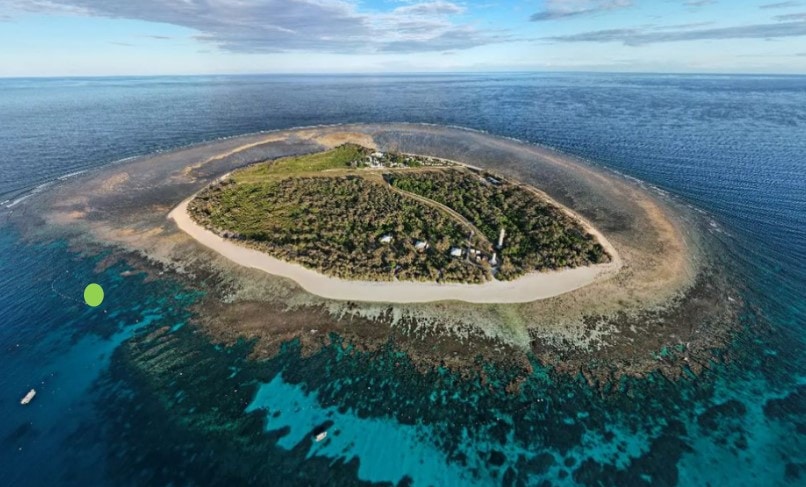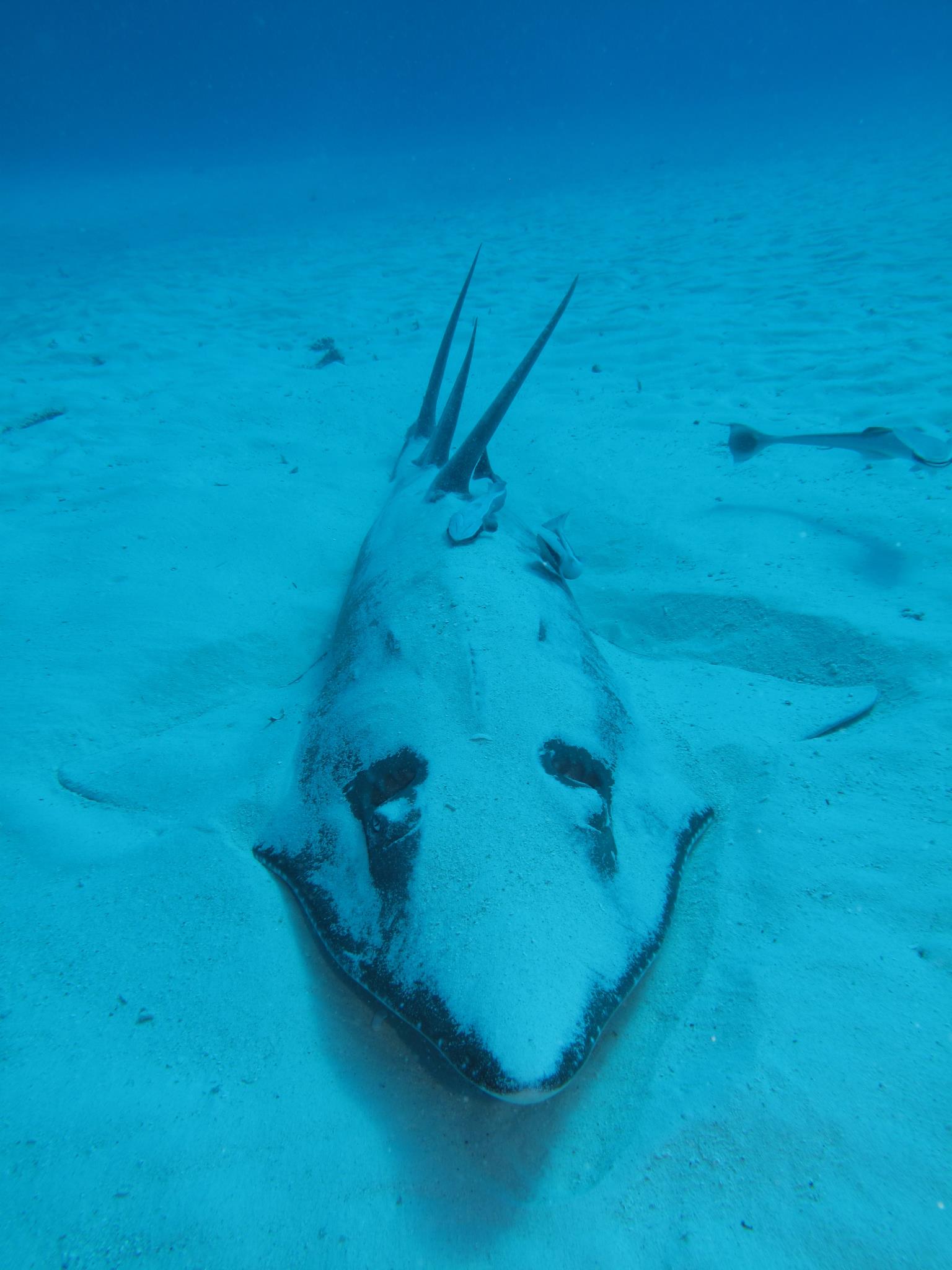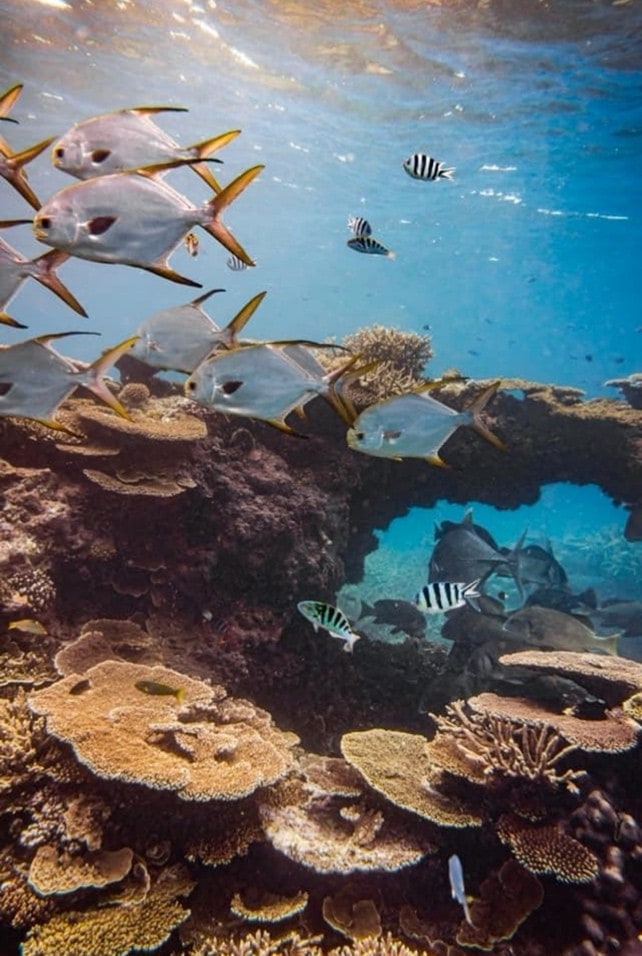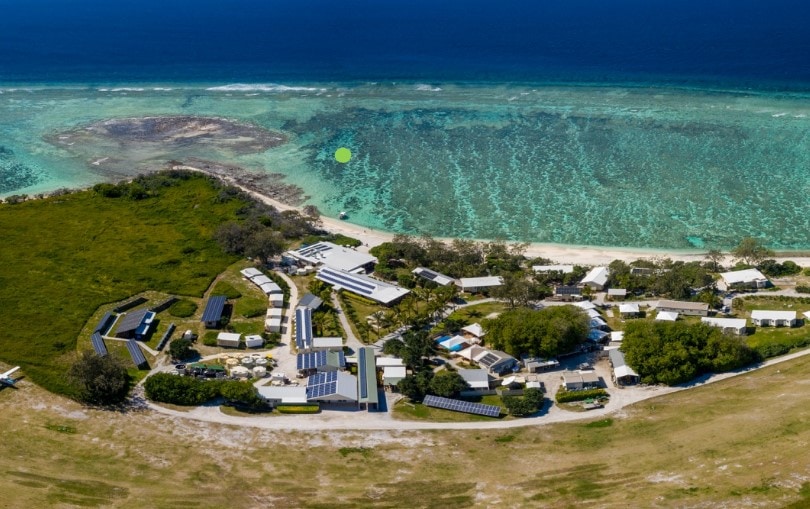Why not utilise the knowledge of staff members who have been exploring our island paradise for years! Our Master Reef Guides and dive instructors have put their brains together to share with you some of their favourite, but not always seen, special spots on the reef.
A lot of our visitors have heard about the lighthouse bommies and the surplus of turtles in the lagoon, but what about some of the lesser-known gems of Lady Elliot!
Second Reef Pink Sea Anemone

Image Credit: @Nazzzzz_

Image Credit: Jacinta Shackleton

Image Credit: Melissa Schroen McKinlay
Anemonefish live in highly structured social groups within their anemone hosts. The group is led by a dominant female who has a sub-dominant male as her partner, with the remainder of fish in the anemone remaining as juvenile males. This order will only change if the dominant female passes away, at which time her male mate will transition into the dominant female and one of the juvenile males will become the subdominant male.
“If you just hover above this location for a while and look down upon the anemone, you can actually see these complicated family relationships in action and you can sometimes hear these fish chatting to each other too!”
– Activities guide Georgia
Second Reef Turtle Cleaning Station

Image Credit: @Nazzzzz_

Image Credit: Jacinta Shackleton
A cleaning station is an area on the reef home to several “cleaner” species such as surgeonfish and wrasse. Turtles have been found to exhibit a particular posture as they enter a cleaning station to suggest they are ready to have algae and ectoparasites removed! There are numerous cleaning stations around Lady Elliot Island with this cleaning station a favourite among larger turtles here during nesting and breeding season.
“You can almost guarantee there will be turtles here cleaning in the afternoon “
– MRG Naz
“This area has been bustling over the last few weeks, with up to eight turtles sighted here all floating around peacefully as the fish do all of the work”
– MRG Jacinta
Second Reef Sea Anemone Bommie

Image Credit: @Nazzzzz_

Image Credit: Jacinta Shackleton

Image Credit: @little.ocean.mel
Anemonefish are protected by their host anemone against predation, by swimming within the tentacles of the anemone, whose discharge of nematocysts can kill other fish. This is a symbiotic relationship where both the anemone host and the resident anemonefish benefit from this interaction.
“I came across this little gem while guiding a glass bottom boat snorkel one day. I love to snorkel through the shallow water and see if there is anything interesting hiding in there, so this was a great find! I estimate there are around 20 + individual anemonefish and anemones on this single bommie! “
– MRG Jacinta
Coral Gardens Red Sea Anemones

Image Credit: @Nazzzzz_

Image Credit: Jacinta Shackleton
Anemonefish can be very picky about their host and as such, only reside within ten different species of the over 1000 species of anemone! These anemones are some of the brightest seen on Lady Elliot Island and are bright red!
“When the sun hits, it illuminates this anemone’s electric colours, comparable to colours seen in Avatar, it is breathtaking! It’s fun to just float on the surface near coral gardens drifting along the reef flats over the red anemone jungle“
– Activities guide Hayley
Malabar Groupers Underneath Coral Overhangs

Image Credit: @Nazzzzz_

Image Credit: @szabi_nemeth

Image Credit: @little.ocean.mel

Image Credit: Paul Jones
Groupers are the largest bony fish on the reef and feed by inhaling their prey whole! They have been sighted swallowing white tip reef sharks and epaulette sharks on Lady Elliot Island. When they move their large, stocky bodies you can often hear a loud “booming” sound in the water.
“There are two locations at Coral Gardens where we see these huge fish daily. One coral overhang is at the southern buoy for this snorkel line and the second is towards the other end of the rope, but in towards the shore. It’s hard to miss these two, even with their camouflage!”
– MRG Kirsty
The Sandy Patch

Image Credit: @Nazzzzz_

Image Credit: Chris Garraway
This area can be found along the lighthouse snorkel line before you reach second reef. It is surrounded by coral around the edges but sits in around 7-8 metres of water. The area is home to stingrays and large turtles with sightings such as these common in the early mornings and late afternoons.
“This is one of my favourite locations on the island! I’ve had some incredible shark and ray sightings here including a great hammerhead passing through only a few weeks ago”
– MRG Jacinta
The Coral Arches

Image Credit: @Nazzzzz_

Image Credit: Russell Charters

Image Credit: Russell Charters

Image Credit: Kristian Laine
These incredible coral archways are windows into the surrounding reef. There are a series of three located at the northern end of the coral gardens snorkel line. The area is home to a plethora of fish species with sharks and turtles frequently sighted here.
“There is always something happening at arches including huge GTS’s”
– Dive Instructor and Activities guide Pieter
Channel One Sea Anemones & Large Clams

Image credit: Ben and Di

Image Credit: Tracey Rider

Image Credit: Tracey Rider

Image Credit: Dale Richardson

Image Credit: Jodi Carlton

Image Credit: Narooma Underwater

Image Credit: Narooma Underwater
The clam species most frequently seen on Lady Elliot Island include Tridacna clams which can burrow or bore into the surrounding reef. It was once thought that these peaceful bivalves were capable of swallowing divers whole or taking off arms, but in reality, they can’t even close their shells completely!
“I love snorkelling through this area on the way out to the marker buoy in the lagoon. I feel as though I notice more and more anemones on each snorkel! There are also a handful of stunning blue and green clams on this path”
– MRG Jacinta
Anemonefish Wall

Image Credit: @Nazzzzz_

Image Credit: Jodi Carlton

Image Credit: Jacinta Shackleton
Did you know that anemones can bleach in the same way as coral? Heat stress can cause sea anemones to expel their zooxanthellae and turn a very pale or white colour. This has been observed at this particular location and has contributed to changes over the years. This location is presently in good health hosting numerous fish and invertebrate species!
“I’ve watched this group of anemones change over the last five years! These anemones are mainly a red/brown colour with at least two different species of anemonefish calling it home. It’s quite easy to spot if you are snorkelling along in the shallow water as its only around 2 metres deep”
– MRG Jacinta
Loggerhead Turtle Resting Areas Near The Lighthouse Quayway

Image Credit: Patrick @patrizio___

Image Credit: Jacinta @jacintashackleton
For years, large Loggerhead turtles have called the island home both in and out of breeding season. Characterised by their huge heads and strong jaws, this species can weigh up to 150kg!
“One of our best-known Loggerhead turtles is Elvis! A mature male who sustained an injury three years ago and has remained local to the Lighthouse Quayway ever since. We estimate individuals of this size to be 30 + years of age”
– MRG Mary
- Please note this is an entry and exit point for our vessels and to take care while looking for marine life
- Drone images have been taken in accordance with our on-island drone policy with prior approval required.
- Please be mindful that the locations and wildlife listed in this blog are all wild and these animals may not always be in these exact locations!
References:
Losey, G. S., Balazs, G. H., & Privitera, L. A. (1994). Cleaning Symbiosis between the Wrasse, Thalassoma duperry, and the Green Turtle, Chelonia mydas. Copeia, 1994(3), 684–690. https://doi.org/10.2307/1447184
Roux, N., Salis, P., Lee, SH. et al. Anemonefish, a model for Eco-Evo-Devo. EvoDevo 11, 20 (2020). https://doi.org/10.1186/s13227-020-00166-7

 Snorkel & Dive
Snorkel & Dive Sustainability
Sustainability






























